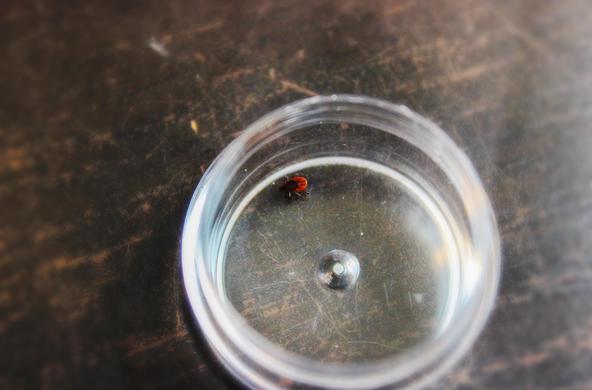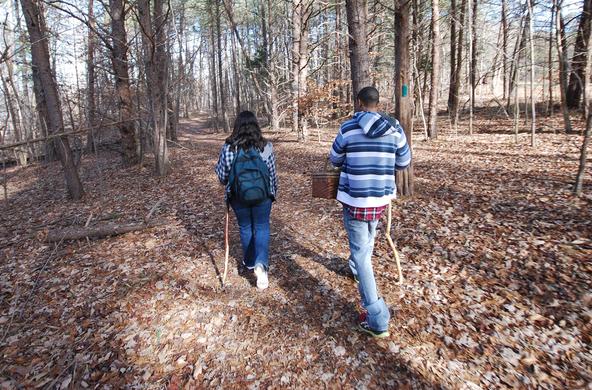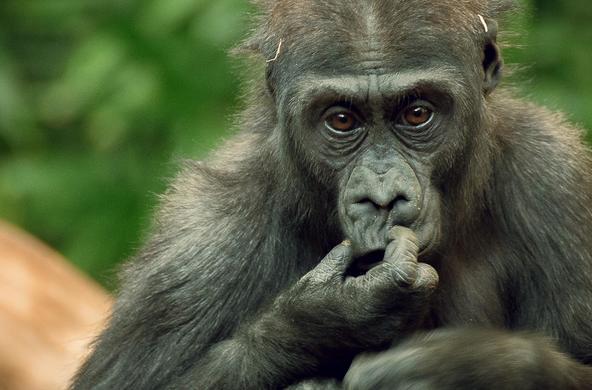Deer ticks are aptly named, in a sense; a Northeastern deer can carry over 1,000 of these ticks on its body. But as far as humans are concerned, the ticks might be more relevantly called mouse ticks. That's because white-footed mice and other small mammals, not deer, are now known by scientists to be major carriers of Lyme disease.
Lyme disease is spreading in the Northeast and the Midwest, and according to the national Centers for Disease Control, the number of annual cases over the past decade has been increasing. However, no one is quite sure why. In a new study published in the Proceedings of the National Academy of Sciences, researchers tried to figure out what is driving the proliferation of Lyme disease in human populations by studying populations patterns in animals that interact with ticks. Their study suggests that large predators like coyotes and foxes that aren't typically associated with Lyme disease transmission may have a big impact on the spread of the disease.
The life cycle of deer ticks depends on interactions in the entire ecosystem in which the ticks dwell, said Taal Levi, the study's lead author, who did the research while a doctoral student at the University of California Santa Cruz and is now an ecologist at the Cary Institute of Ecosystem Studies in New York.
Ticks rely on "bloodmeals" from other animals to move through their three life stages: larva, nymph, and adult, Dr. Levi said. When the ticks hatch into larvae, the bacteria that causes Lyme disease, Borrelia burgdorferi, is not present.
For a tick larva to grow into a nymph, its next life stage, it needs blood. If the larva gets its blood meal from a mouse already carrying B. burgdorferi, the larva picks up the bacteria and becomes a carrier itself. It grows into a nymph and waits for its next host so it can get the blood meal necessary to grow into an adult tick. "Sometimes one of those nymphs doesn't bite a small mammal but bites a person, and that's where we get the disease," Dr. Levi said.
While people used to blame deer for the spread of Lyme disease, Dr. Levi said that scientific evidence has indicated that deer probably aren't significant transmitters of B. burgdorferi bacteria because their systems tend to quickly flush it out. But "some hosts, like white-footed mice, don't clear it at all," he said, which means the bacteria hang around long enough to be transmitted to ticks.
Dr. Levi hypothesized that because these small animals are prey, their abundance – and the spread of the Lyme disease bacteria within them – depends on the abundance of their predators. In the study, he and his colleagues did a computer analysis of known cases of Lyme disease and population data for red foxes — a key predator of rodents — in four states with a high prevalence of the disease: Minnesota, Wisconsin, Pennsylvania and Virginia. For good measure, they also compared deer populations with the tally of Lyme disease cases in Wisconsin, Pennsylvania, Virginia and New York.
The models showed higher numbers of Lyme disease cases in places where there are fewer foxes. They detected no significant relationship between numbers of deer and numbers of Lyme disease cases.
The researchers also ran computer programs comparing Lyme disease cases with coyote populations in the states where they modeled red fox populations. As coyotes have spread through the Midwest and Northeast, they have tended to displace foxes, Dr. Levi said.
But coyotes don't generally pack themselves as tightly into an area as foxes, meaning that there tend to be fewer coyotes in an area than there were foxes. "If you replace fox habitat with coyote-occupied habitat, you lose a large number of predators, and those predators you've lost consumed a high number of mammals," Dr. Levi said. So the models showed a significant relationship between high numbers of coyotes and high numbers of Lyme disease cases.
So: more coyotes equals fewer foxes, which means fewer predators, which means more small animals are running around that could be carrying the bacteria for Lyme disease. More bacteria is therefore transmitted to more ticks, which then transmit the bacteria to humans. It's complicated.
In fact, it's so complicated that Maria Diuk-Wasser, an epidemiologist at the Yale School for Public Health who was not involved in the study, said she was skeptical about the connections drawn between top predators and Lyme disease cases in the study.
Modeling patterns can show relationships between data, but not necessarily the causes of the relationships, she pointed out. For example, to say that there's a correlation between the number of coyotes in an area and the number of cases of Lyme disease reported there is different than saying that a high number of coyotes in an area causes more cases of Lyme disease in humans.
"What they say is plausible," Dr. Diuk-Wasser said. But she said she wanted to see more experimental studies performed out in the field to support the models. The models in the study use historical population data recorded by hunters and state wildlife management services rather than data collected specifically for the study.
Dr. Diuk-Wasser said that birds are also major carriers of Lyme disease bacteria and might be even more significant carriers than rodents because of the distances they can easily travel.
Given the health implications, "understanding the ecological mechanisms that drive Lyme disease in nature is very important," she said.








